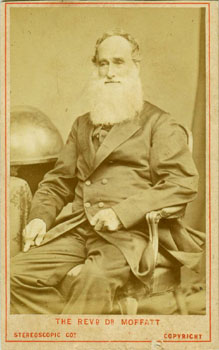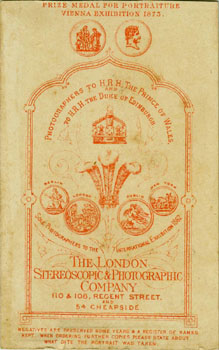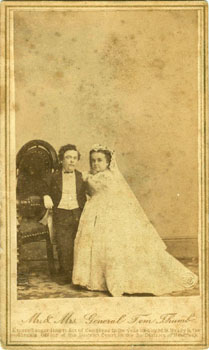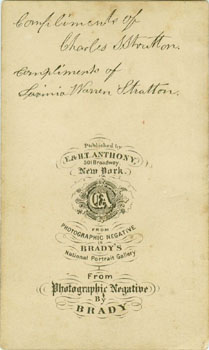
Although the picture postcard is almost as old as the postage stamp, it wasn't until the 1890s that postcards with pictures of scenic views and landmarks were published in large numbers. After the United Kingdom and United States postal services gave a green light to the use of divided backs, in 1902 and 1907 respectively - message on one half, address on the other, thus freeing the entire one side of the card for the picture - the craze reached fever peak in the decade up to the Great War. Due to two world wars and the introduction of the telephone in most private households, postcards were never again produced in quite the number and variety as during the pre-war heyday, but they remained enormously popular for most of the remainder of the century.
The widespread availability of email, text, skype and smartphone services has understandably been followed by a decline in the use of postal services, and postcards have likewise diminished in popularity. A study last year claimed that the proportion of British tourists sending postcards home had declined from a third in the 1970s to an astonishing 3% (although another survey gives a more believable figure of 16%). Similar trends have been reported elsewhere, such as in India, and I can report that I struggled to find any postcards, let alone decent ones, in Honiara last year.

Conway (Conwy) Castle, Wales, c.1890-1900
Photomechanical print by the Detroit Photographic Company, 1905
Image courtesy of Library of Congress
I think it's still a little early to assume the complete extinction of the postcard - viz. Alan and his Twitter for Gentlefolk campaign, and the huge Postcrossing project, responsible for almost half a million postcards a month - but I'll sadly admit the chances of a major revival are slim. On a more positive note, and prompted by this week's Sepia Saturday Photochrom image of Conway Castle in Wales, I thought we'd take a look at what people kept as mementos from their vacations before the advent of postcards.

The Great Pillars, Baalbek, Lebanon, c. 1857-1860
Albumen silver print, 203 x 153mm, by Francis Frith
Image courtesy of National Gallery of Canada
Albumen-based cartes the visite were the first popular and affordable medium for portraits in the early 1860s, which tends to overshadow the fact that albumen prints were already well established in photography by then. Developed in 1850 by Blanquart-Evrard the albumen print quickly superseded the calotypes or salt print. Paired with the wet plate collodion process, many print copies could be made of a single photographic glass plate negative. One of the first to take advantage of this was Francis Frith, who established a huge business selling both mounted and unmounted prints of views produced from three trips to the Middle East between 1856 and 1860.

Dovedale, Derbyshire, c. 1850s
Stereoview by the London Stereoscopic Company, 54 Cheapside
Image © and courtesy of John Bradley
The sale of paper prints was boosted considerably by displays of the stereoscopic photograph at the Great Exhibition at Crystal Palace in 1851, and the subsequent production of views in enormous numbers by firms such as Francis Frith and the London Stereoscopic Company. The stereoview - also referred to as a stereogram or stereocard - used two images of the same scene, taken from slightly different view points, mounted side-by-side on card which, when viewed with a special device with lenses, gave the appearance of a three-dimensional picture.
After a revival in the 1890s, stereoviews remained popular well into the twentieth century, but seem to have fallen from favour after the Great War.

Buxton Crescent from The Slopes, Derbyshire, c.1860s
Carte de visite by Francis Frith (Frith's Carte Series)
Image © and collection of Brett Payne

Chatsworth House, Derbyshire, c.mid- to late 1870s
Carte de visite by William Potter of Matlock Bath
Image © and collection of Brett Payne
For the duration of the carte de visite's heyday, in the 1860s and 1870s, many countrywide firms like Friths, as well as local photographers such as William Potter of Matlock Bath produced views of the countryside in great numbers. These two Derbyshire views showing the popular Victorian tourist destinations of Buxton and Chatsworth are typical examples.

View of unidentified building, possibly in Derbyshire, c. mid-1880s
Cabinet card by Alfred Seaman of Chesterfield
Image © and collection of Brett Payne
The larger format of the cabinet card, first introduced in the late 1860s, but which did not really catch on until a decade or so later, lent itself to scenic views, so it is perhaps a little surprising that they are not more common. This example from Chesterfield photographer Alfred Seaman depicts an unidentified building, possibly a hotel or a hyrdopathic establishment and presumably somewhere in northern Derbyshire; it is from the mid-1880s.

Wallis' Furnishing Ironmongers shop, Bakewell, Derbyshire, c.late 1880s
Collodion positive (ambrotype) by unidentified photographer
Image © and courtesy of Nino Manci
It is clear from Seaman & Sons' display of mounted scenic photographic views in the shop window of Wallis' Furnishing Ironmongers shop (click image above for a more detailed view of the display) in Bakewell, where they did not have a branch studio, that they did offer scenic views.

Ashby Castle, Ashby-de-la-Zouch, Leicestershire, c.late 1860s-early 1870s
Albumen print by J.W. Price of Derby & Ashby-de-la-Zouch
(mounted on card, later roughly trimmed)
Image © and collection of Brett Payne
Seaman and many others published loose and mounted prints of landscapes and other views in a large variety of formats. This example of a mounted print (roughly trimmed) depicts the ruined Ashby Castle and has the backstamp of photographer J.W. Price. At 138 x 98mm, it is slightly larger than the size of a postcard. A scene in Sir Walter Scott's popular historical novel Ivanhoe is set in Ashby Castle, and this attracted visitors to the town of Ashby throughout the 19th Century. Harrod & Co.'s 1870 directory states,
Ashby is highly celebrated on account of its baths and springs, and its ancient castle ... Tradition states that Mary Queen of Scots was confined within one of the upper chambers.Price no doubt sold this print and others from his studio on Ivanhoe road.

All Saints Church and St Mary's Gate, Derby, 1884
Albumen print (126 x 171mm), attributed to Richard Keene of Derby
(mounted on album page)
Image © and collection of Brett Payne
Loose prints, such as this 1884 view of All Saints church - now Derby's cathedral - were sold by Derby photographer, printer, publisher and stationer Richard Keene from his premises just around the corner at number 22 Irongate, still within full view of the church. A visitor could then paste the print into a large format album together with others from his trip. This particular print sits alongside two other Derby views on an album page, with photographs of Bournemouth on the reverse.


(Left) Unidentified view of ruined building on cigarette box, by Davis & Sons, Barrow-in-Furness (Right) View of The Promenade, Matlock Bath on glass, mounted on velvet frame, by William Potter of Matlock Bath
Images © and collection of Brett Payne

Cover of Buxton and Derbyshire booklet of views, publ. F. Wright, Buxton

Matlock Dale and High Tor, Derbyshire, c.1892, published mid-1890s
Photomechanical print by Valentine and Sons of Dundee
Images © and collection of Brett Payne
It was also possible to buy sets of photographs, either loose or in booklet form, such as this collection of 24 Derbyshire views published by Francis Wright, stationer and bookseller of Buxton. The photographs were taken and printed by the Dundee firm of Valentine and Sons, and sold by Wright from his premises at 1 Spring gardens and Devonshire colonnade.

High Tor and Dale, Matlock, c.1892
Colourised postcard by Valentine & Sons, Dundee
View #17206, registered 1892, published c.1905-1906
A decade or so later this exact view was republished a number of times by Valentine and Sons in postcard format, a colourised example from c.1905-1906 being displayed above. Although other print formats would continue to be sold, nothing would rival the postcard for many decades.
Next time you're on holiday and send a postcard to someone back home - and I hope you do (a few each year can't be too bad for your carbon footprint) - spare a thought for its forerunners. If you head over to Sepia Saturday, you may well find a few more ancestors to the postcard on display amongst this week's contributions.
References
Spiro, Lisa (2006) A Brief History of Stereographs and Stereoscopes, on Connexions
J.G. Harrod & Co.'s Postal and Commercial Directory of Derbyshire, Leicestershire, Rutland and Staffordshire, 2nd Edition, 1870, from the University of Leicester's Historical Directories
Kelly's Directory of Derbyshire, Nottinghamshire, Leicestershire & Rutland, 1895, Kelly & Co. Ltd., from the University of Leicester's Historical Directories

















